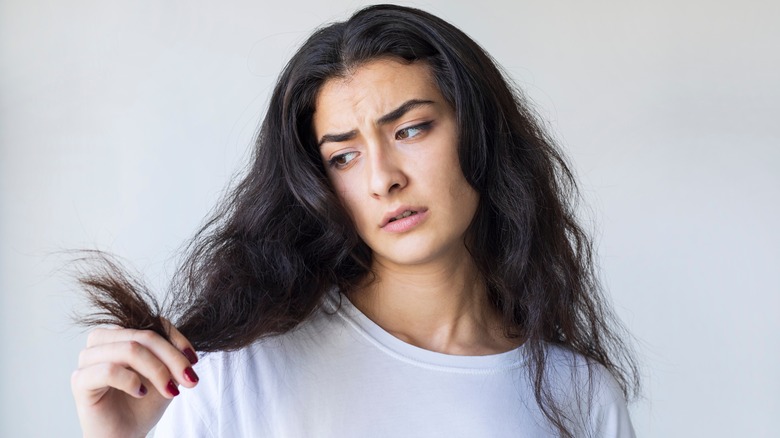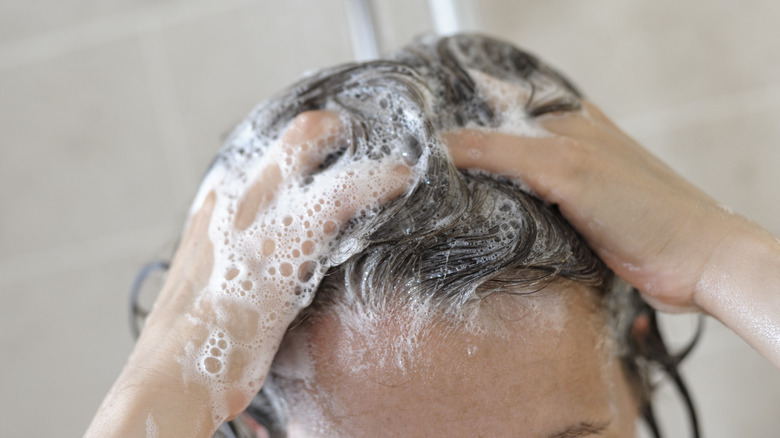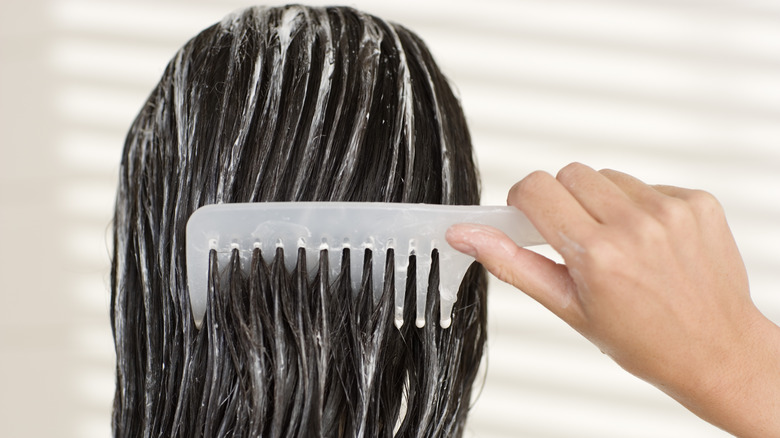Does Your Over-Processed Hair Feel Like Straw? Here's How To Fix It
There comes a time when everyone has to accept one of the most inconvenient facts of life: The more you style your hair so it's pristine and trendy, the worse it will look and feel over time. It's a tragic reality. The people who care the most about how their hair looks are probably the most likely to destroy their hair by putting it through various harsh processes. But when your hair is put through the wringer of bleaching, chemical treatments, heat, and more, it reaches a point where it becomes over-processed.
Over-processed hair becomes extremely dry and, as a result, broken, with a straw-like texture. Individuals with curly or textured hair might see their hair pattern become inconsistent, with some sections of hair losing their natural spiral or wave entirely. One of the biggest mistakes people make with over-processed hair is that they will continue to style it with heat, desperate to make it look better. However, this will dig you into your hole even deeper. If you really want to fix your head of hay, avoid the heat and follow these tips instead.
Shampoo over-processed hair with extra care
We get it: Sometimes you get in the shower, it's late at night or early in the morning, and you're just moving through the motions. But if you're washing your hair, you'll want to be wide awake and present with your routine. When your hair is wet, it is much more fragile and prone to breakage. Roughly rubbing, brushing, and tying up our wet hair are the most common ways we all ruin our hair. You should be mindful of handling your hair anytime it's wet, but you should be extra intentional when applying your shampoo.
Avoid rubbing the bottom strands of your hair, which have been on your head the longest and thus have endured the most damage. The bottom of your hair is the farthest from your scalp, where natural hair oils are secreted. As NYC hair stylist Judy McGuinness (@judzdoeshair) shared on her TikTok video, you should only focus your shampoo on your scalp. McGuinness recommended you leave the conditioner at the bottom of your hair while you shampoo to ensure you preserve your ends. Ultimately, hydrating your hair is going to be the most important step.
Hydrate, hydrate, hydrate
We might not need to tell you this, but if your hair has the texture of straw, it desperately needs some hydration. The best way you can provide that is to invest in your moisturizer. You'll want to find a high-quality conditioner with ingredients intended to hydrate and restore damaged hair. If your hair is in really bad shape, it might be best just to use a heavy-duty hair mask. Master stylist Halli Bivona explained to Byrdie that if you have over-processed hair, "Replace your daily conditioner with a mask ... This way, you're putting in the maximum moisture with every wash. I recommend leaving it in up to 20 minutes and then rinsing thoroughly."
The reason that your hair becomes so dry after chemical processing and heat application is that those things damage the protective outer layer of the hair, the cuticle. The cuticle is what is responsible for sealing in your hair's moisture. To combat this, we recommend you make a trip to the salon every few months for a reparative treatment that can heal and bond the cuticle. You might discover that protein filler is the perfect treatment for strengthening your damaged locks. If you maintain a consistent routine of gentle shampooing, intense conditioning, and occasional salon treatments, in time your hair should slowly recover to total health.


